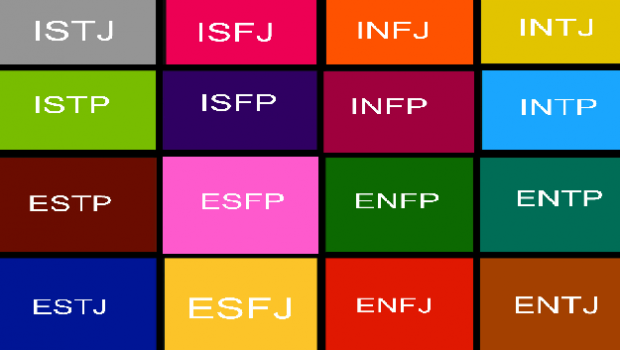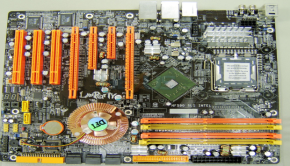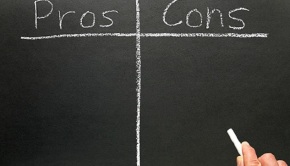Adam Lans – Implications of Myers Briggs personality
Here is another one of our authors with low latent inhibition offering some insight into his understanding of Myers Briggs typing. His natural comprehension of the subject without any advanced studies in the area helps to highlight how those with low latent inhibition are able to very quickly and thoroughly break down and understand often advanced or deep routed subjects.
The Implications of Myers Briggs Personality – Adam Lans
What makes Myers Briggs Personality Type indicator so interesting is the fact that it seems to make sense for people, despite being criticized for no scientific basis. Instead of questioning its validity, this article will explain why it makes sense to people, what it means psychologically without judgements or labels, and it’s implications.
First, I’ll introduce the Myers Briggs Personality model, and what it is in a very complete, but conventional sense. This part will be incredibly informative, but not as “fun.” Part II is a philosophical, theoretical, and observational view, and will take a more creative position on the whole subject. In Part II, the subject will be broken into parts, and its meaning will be gutted.
Part I: What is the Myers Briggs Personality Type Indicator
There are 16 types of Myers briggs personality. Of the 16 types, there are 4 letters which label type, each consisting of either Introversion or Extraversion, Intuition or Sensing, Feeling or Thinking, and Perceiving or Judging.
Every human mind without any abnormal psychological conditions do all 8 of these things. The labels indicate our preferences. This is a simple labelling system for us to understand the order of our “cognitive functions.” Our cognitive functions are the root of Myers briggs personality, and according to the theory, explain who we are independent of environmental circumstances. The cognitive functions are the things that describe “The fundamental ways our mind works in order to cope with our environment,” Our functional order discerns which of these “cognitive functions” we do most and least, ultimately comprising our personality.
There are 8 cognitive functions. 4 of the cognitive functions explain how we perceive the world, and the other 4 explain how we judge the world.
Perceiving Functions: Intuition and Sensing
1. Introverted Intuition (Ni)
2. Extraverted Intuition (Ne)
3. Introverted Sensing (Si)
4. Extraverted Sensing (Se)
Judging Functions: Thinking and Feeling
5. Introverted Thinking (Ti)
6. Extraverted Thinking (Te)
7. Introverted Feeling (Fi)
8. Extraverted Feeling (Fe)
There are 2 categorizes for judging the world, and 2 categories for how we perceive it, but it becomes “a function” when we elect to introvert or extravert the elected category, creating 4 categories each. These is how we arrive at the cognitive functions. The first four cognitive functions that we end up preferencing is called our Dominant, Secondary, Tertiary, and Inferior. The rest of the 4, meaning our 5th, 6th, 7th, and 8th functions are “unconscious functions,” or “shadow functions” which isn’t really payed attention to traditionally.
So what do the original letters that label our personality mean? It’s fairly simple. They tell us the order of our cognitive functions. The first letter, I or E, tells us whether our first (dominant) cognitive function is an introverted one, or an extraverted one. By rule, the order of our cognitive functions must alternate from introversion to extraversion. This is another theoretical premise which claims that personality is organized in order compensate for the procession of introversion/extraversion. This is very boxy, but theoretically, the logic is succinct. For example, an INTP will have in order from dominant to inferior, Ti, Ne, Si, Fe. No personality type has a cognitive function which shares introversion or extraversion with the preceding function.
The second letter, N or S, will tell us whether one of our first two functions have an S, or an N. Another rule is that perceiving functions must be 1st and 4th, or 2nd and 3rd in our order. This rule is in place because in theory, there must be a balance between perceiving and judging the world. Therefore, the same rule applies to our judging functions. This logic makes more sense emotionally than alternating introverted and extraverted functions, which seems to be a bi-product of the natural mathematical model, and not really the raw personality of the subject.
The same rule applies to our third letter as our second letters, with T or F. It will tell us whether our first two cognitive functions contain a T or an F.
Lastly, our last two letters, P or J, dictates whether our dominant cognitive function is a perceiving or judging function if we are extraverted. It dictates our secondary cognitive function if we are introverted. This rule is in place because perceiving functions explain what we do externally, and what introverts do externally is secondary.
Part 1b: Interpreting Cognitive Functions
So what do the cognitive functions mean? I will explain each of them
Ni- When the mind creates a narrow scope which pinpoints an unexplainable golden possibility.
Ne- When the mind creates a broad scope which sees multiple unexplainable unpolished possibilities
Ti- When the mind analyzes subjective internal raw data.
Te- When the mind synthesizes external objective information.
Fi- When awareness is geared toward personal feelings and values
Fe-When awareness is geared toward the feelings in the atmosphere
Si- When the mind stores observations.
Se- When the mind experiences and processes current observations.
Our inferior often means that we feel undressed when we use the cognitive function. Our primary and secondary tend to create an axis, where the two functions bounce back and forth, helping one another to do function on high capacity. This axis is our most comfortable way to deal with stress, and typically cope in the world. For example, an ENFJ will constantly scan the emotional environment around them, getting a collective vibe of how the people around them feel, and they will use this “vibe” to follow their Ni gut instinct, which gives them sharp direction in this atmosphere.
If you google any of these cognitive functions, the interpretations and information is endless. This is my interpretation of what each of these functions mean after studying this for quite a while. I think it’s valuable to interpret our own 4 functions, and understand how they link in creative ways.
Part II Gutting the meaning
Here a few observations that I have after analyzing the cognitive functions.
1. There is an overlap between Sensing and Intuition functions. To observe doesn’t require seeing possibility, but seeing possibilities requires observation. Therefore, Those with N cognitive functions will have developed S functions as well, while those with S functions might not have developed N functions. Are they one in the same? Or is N really just an ability, in which case personality might not explain it.
2. If the first 4 functions are conscious functions, and the last 4 are unconscious, it implies that one does not use 4 of the cognitive functions consciously. This isn’t always true, so either functional order or personality has the ability to “modify,” Or the mind can conjure and consciously process unconscious functions. This area of research has been studied and is often accepted in “Functions Of A Type” by Gary and Margaret Hartzler. However, it leads me to point 3.
3. What makes a cognitive function conscious? If it depends on our actions and senses, (called P-consciousness), then what we call our unconscious functions are certainly conscious as well. It doesn’t make sense that Someone without Fi in the conscious 4 functions do not “act or sense” their values. In this case “conjuring up” unconscious functions don’t really happen because we experience them the same way as our first 4 functions, just to a lesser degree. If consciousness in the functions refers to A-consciousness instead of P-consciousness, then this means that we can Access our rational understanding of the functions. This is where the theory creates it’s own answer. It has already explained which 4 functions we have conscious access to, so it’s soundness depends on the bi-product of the mathematical model. Therefore, it seems to be slippery. I asked 100 people to take the cognitive function test, and results varied dramatically with most subjects. The natural patterns in the model are not at all replicated in mathematically succinct way. Part of this is due to lousy test questions, but it doesn’t make the main principle a false premise. The rational understanding of the functions may vary prior to exposure to the model. So does the model create a placebo effect for those who claim it “makes sense,” for them? If so, then does it become impossible to refute this underlying truth? Yes, the truth is still not perfectly clear, but I think it’s important to acknowledge the possibility without attachment to anything.
4. There is obviously the challenge about whether these cognitive functions are responsive to experiences which train us to use them, or if they are innate, which coins “personality.” I don’t see why there must be a rigid attachment to the idea that it must be innate, despite the original intent of the model. For example, Fe is something that is spiked with those who are enmeshed, even in the slightest fashion. There is a disclaimer that says that those with disorders contradict the accuracy of their true type. The truth however, is disorder is almost never absolute. Disorder is simply a value or measure we place on one’s reasonable ability to mentally maintain order. So this means the same judgement we place on the test, but the ultimate judgement contradicts even the slightest undertones of any unreasonably defined disorder. Very subtle enmeshment will influence one’s extraverted feeling. Of course, the same reasoning applies to the disclaimer, that this still obscures the Personality. However, perhaps there is a reason why someone became subtly enmeshed, and perhaps this catalyzing embodies true personality. In this sense, Personality isn’t stagnant, it is more of a catalyst that people have which is activated in response to their environment. This ultimately challenges the cognitive functions measure of Personality. If your type cannot be measured by your behaviors toward the world, then why is personality measured by cognitive functions? So this will tap into the philosophical underpinnings of Personality. It is likely a mixture of innate and environmental, and the only reason I can see for attaching to the notion that this is “innate” is for some sort of stability in a world of confusion, which is obviously important for people. But I think that this is counterintuitive to what it means to locate our “innate self.” I think this journey is a lot steeper, and contradicts normal behavioral logic, which leads to my conclusion.
Myers Briggs is ultimately useful not because it answers the self, it simply explains the artificial self. It acts as a frozen time frame of who we are, but not our totality. This is ultimately beautiful, because It offers an opportunity to examine why we attach to a personality type. Why do we end up preferencing certain functions? Using this form of reflection ultimately leaves room to grow and understand who we really are. The more frozen time frames we have of self, the more we can connect dots. Just like writing a rough draft, it is important to examine the self externally in order to start the journey of an internal search. These 4 observations ultimately allowed me to understand why my own thought patterns contradicted my “type.” The contradictions are where the self is asking us to get out, not in the validations, and without the model, no contradictions can be made! In this sense, our type becomes part of us, but represents a fragment of who we truly are.
You can take the standard Myers Briggs test here – http://www.humanmetrics.com/cgi-win/jtypes2.asp










